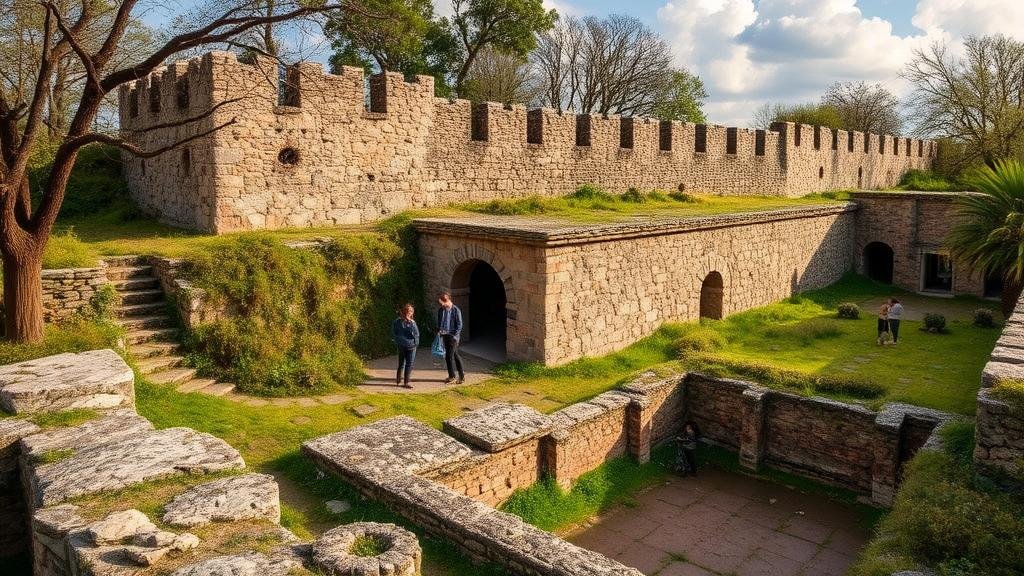Exploring Ancient Fortifications for Military Artifacts
Exploring Ancient Fortifications for Military Artifacts
Ancient fortifications serve as critical historical records that offer insight into the military strategies, technologies, and social structures of past civilizations. This article explores the significance of these structures in the quest for military artifacts, which can illuminate not only the history of warfare but also the cultural dynamics of the societies that built them. By examining well-preserved fortifications, researchers can uncover artifacts that reflect the evolution of military technology and tactics over time.
The Importance of Ancient Fortifications
Fortifications were integral to the defense of civilizations, providing protection against invaders and illustrating the military priorities of respective societies. were often constructed in strategic locations, such as hills, riverbanks, or along trade routes, highlighting both tactical acumen and geographical awareness.
- Physical Defense Structures: Walls, moats, and towers were designed to repel attacks. For example, the Great Wall of China showcases advanced engineering techniques and an understanding of territorial defense.
- Cultural Significance: These fortifications often served as symbols of power and control, representing the rulers ability to protect their people. The Acropolis of Athens, for instance, functioned both as a fortification and a statement of civic pride.
Case Studies of Notable Fortifications
Several ancient fortifications have yielded a wealth of military artifacts, providing a tangible link to the past. Here are three significant examples:
- The Citadel of Mycenae: Located in Greece, this archaeological site is known for its impressive cyclopean walls and the famous Lion Gate. Excavations have uncovered weapons, pottery, and jewelry that reveal the wealth and military prowess of the Mycenaean civilization.
- Masada: The ancient fortress overlooking the Dead Sea is famous for its role in the Jewish revolt against the Romans. Artifacts such as arrows, coins, and storage jars found at Masada provide critical information about the siege tactics and daily life during this tumultuous period.
- The Roman Fort of Vindonissa: Situated in present-day Switzerland, this fort served as a strategic military base for Roman legions. Archaeological findings, including weapons and military equipment, offer insights into the structure and organization of Roman military units.
Methods of Artifact Recovery
Recovering military artifacts from ancient fortifications requires a combination of archaeological techniques and technologies. The following methods are commonly employed:
- Excavation: Systematic digging and sifting allow archaeologists to uncover artifacts buried within fortification sites. For example, the meticulous excavation at Pompeii has revealed weapons and defensive instruments intact within the ash.
- Geophysical Surveying: Techniques such as ground-penetrating radar help locate buried structures without invasive digging, allowing researchers to map the fortifications before excavation.
- Remote Sensing: Satellite imagery and aerial photography can identify large-scale fortifications and changes to landscapes, helping guide on-the-ground investigations.
Challenges and Ethical Considerations
The exploration of ancient fortifications also presents challenges and ethical questions that must be addressed:
- Preservation vs. Excavation: There is an ongoing debate among archaeologists regarding the need to preserve sites intact versus the desire to excavate them for research. Finding a balance is crucial to maintain the integrity of cultural heritage.
- Looting and Illegal Artifacts: The demand for military artifacts can lead to looting and illegal sales. Responsible excavation practices and education about cultural heritage are vital to combat these issues.
Conclusion: The Value of Inquiry
Exploring ancient fortifications provides a unique lens through which to view the military history and societal structures of ancient civilizations. By utilizing various archaeological methods and addressing the ethical implications of recovery practices, researchers can uncover artifacts that yield critical insights into military strategies and cultural values. The findings not only enhance our understanding of historical warfare but also foster a broader appreciation for the civilizations that constructed these enduring structures.
In summary, the study of ancient fortifications and their artifacts enriches the narrative of human history, making it imperative for modern archaeologists and historians to continue their exploration of these invaluable sites.



